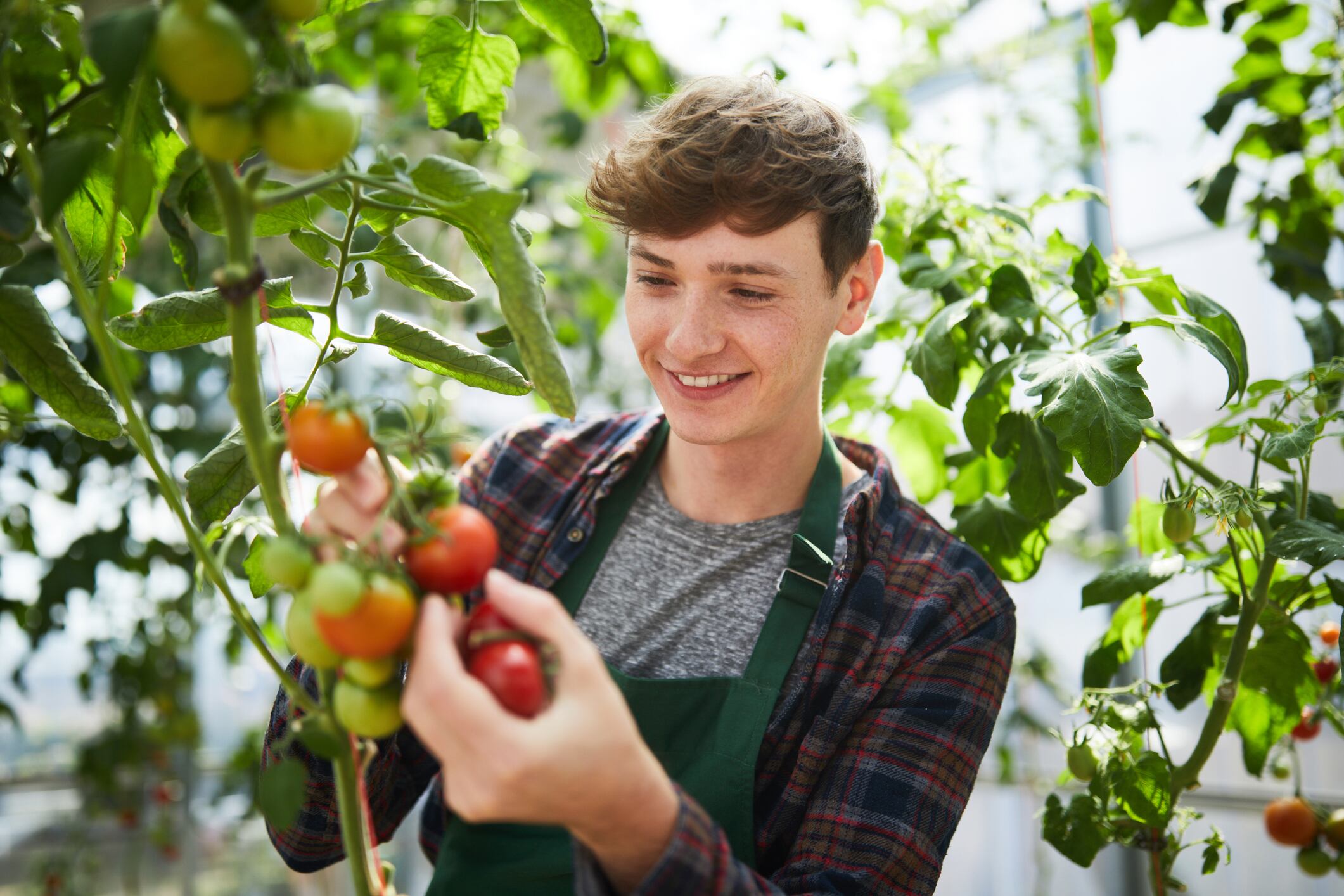Tomato leaves may not be the obvious choice for an alternative source of protein – or, to be honest, that much else – but they do have surprising potential.
They are actually quite dense in the beloved nutrient, containing up to 27% protein.
Could it be extracted and used as an alternative protein source?
Can protein be extracted from tomato leaves?
The protein in tomato leaves has the potential to be extracted and used as a plant-based alternative. But doing so at scale is currently a work in progress.
A PhD project, by researcher Marietheres Kleuter, explored this extraction.
The protein can be extracted using alkaline methods, although if it were extracted in an industrial context, this would not necessarily be this method used, explains Luisa Trindade, the coordinator of the project at Wageningen University & Research in the Netherlands.
You can extract much more protein from younger tomato leaves, Trindade explains, than you can from older leaves.
As the leaves age, the protein breaks down into peptides, which are smaller molecules. This is the result of proteases, enzymes that break down proteins.
How can tomato leaf protein be used in food?
Much of the protein from tomato leaves is Rubisco, the same kind of protein found in duckweed.
In plants, Rubisco plays an important role in photosynthesis. As an edible protein, on the other hand, it can be used to create tofu-like substances. Or at least, it can in an ideal scenario – at this stage, the presence of chlorophyll, a pigment, means that it still turns out green, which the researchers worry will be unpalatable for consumers.
Rubisco also has a similar functionality to whey protein, Trindade explains.
Can tomato leaf protein be commercially viable?
While the protein can be extracted, the issues currently are with the efficiency with which it can be done. You might extract 10% of the protein, explains Trindade, but 90% will still be there. If the protein is to be made commercially viable, this efficiency must be increased.
Fifty per cent of the protein is insoluble, so this must be extracted in a different way. But this still leaves a lot of soluble protein that doesn’t get extracted.
There are two ways in which this problem can be solved: either develop better extraction methods, or change the plant being extracted from.
Research is currently taking place both to improve the extraction process, and the viability of the plants themselves for extraction.
“Our aim is to understand the genetic factors that are the barriers to this extraction, so that we can improve them in new varieties,” explains Trindade.
“And in that moment then I think it will become commercially viable.”
Global Food Tech Awards 2025
Do you have a food-tech innovation that you are proud about? There’s still time to enter the European heats of Global Food Teach Awards 2025 . The closing date is July 18, and judges are looking for outstanding ideas that are shaping the future of food. Your innovation can impact any part of the food and beverage supply chain, from alt proteins and sustainable ingredients to AI-driven solutions, personalised nutrition and gut health, upcycled products, and cutting-edge smart packaging. Winners will be invited to pitch live to investors and industry leaders on stage at the Future Food-Tech summit in London on September 24 where they’ll also receive a trophy.



